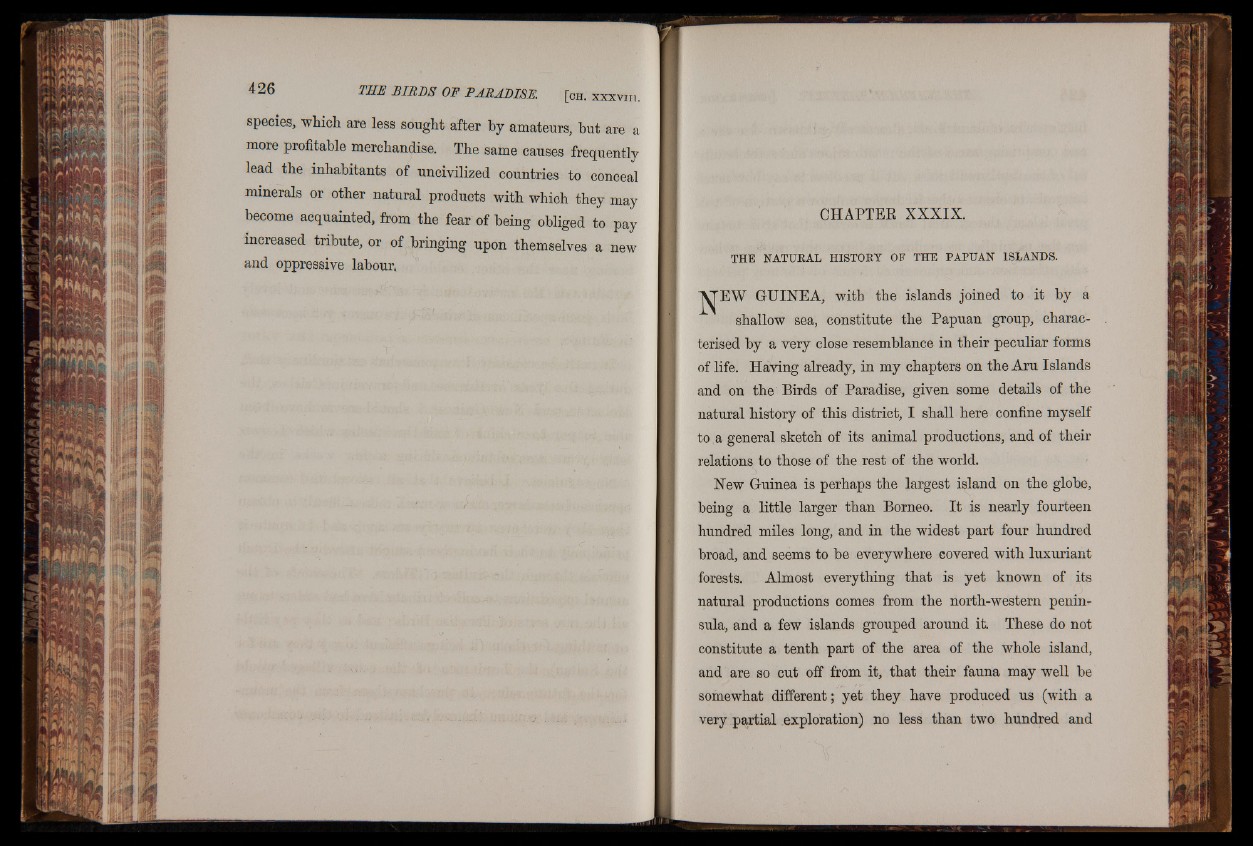
species, which, are less sought after by amateurs, hut are a
more profitable merchandise. The same causes frequently
lead the inhabitants of uncivilized countries to conceal
minerals or other natural products with which they may
become acquainted, from the fear of being obliged to pay
increased tribute, or of bringing upon themselves a new
and oppressive labour,
CHAPTER XXXIX.
THE NATURAL HISTORY OF THE PAPUAN ISLANDS.
shallow sea, constitute the Papuan group, characterised
by a very close resemblance in their peculiar forms
of life. Having already, in my chapters on the Aru Islands
and on the Birds of Paradise, given some details of the
natural history of this district, I shall here confine myself
to a general sketch of its animal productions, and of their
relations to those of the rest of the world.
Hew G-uinea is perhaps the largest island on the globe,
being a little larger than Borneo. I t is nearly fourteen
hundred miles long, and in the widest part four hundred
broad, and seems to be everywhere covered with luxuriant
forests. Almost everything that is yet known of its
natural productions comes from the north-western peninsula,
and a few islands grouped around it. These do not
constitute a tenth part of the area of the whole island,
and are so cut off from it, that their fauna may well be
somewhat different; yet they have produced us (with a
very partial exploration) no less than two hundred and